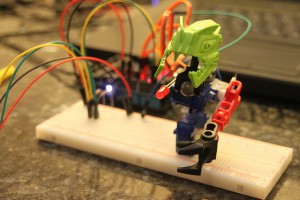The last five years or so have seen such a whirlwind of exciting developments in the educational technology sector that it’s a daunting task to step back and take stock of it all, never mind distill it down to one or two key elements. But having thought long and hard about this, I realised the revolution we are currently experiencing boils down to one deceptively simple word: openness.
The term “open” has become associated in particular with open source content – often referred to as Open Educational Resources (OER), including MOOCs (Massive Open Online Courses) – which is radically changing the face of education.
The open source revolution
High quality, freely available and curriculum-relevant online resources spell the end of costly textbooks and the empowerment of a more egalitarian education system. Struggling schools can now funnel much needed funds once spent on textbooks into other areas.
“Open content” does not simply mean cost free. As the New Media Consortium Horizon Report on K-12 for 2013 suggests, “open education advocates are working towards a common vision that defines ‘open’ more broadly – not just free in economic terms, but educational materials that are freely copiable, freely remixable and free of barriers to access.” Add to this the onset of cloud computing, which frees teachers from the burden of amassing curriculum binders or painstakingly saving Word documents to hard drives.
Opening up the playing field
Technology is enabling education to become more open by levelling the playing field in other ways too. Personalised education is paving the way for a new vision of learning that allows each and every child to achieve mastery of the curriculum in his or her own way, at his or her own pace. Individually tailored learning programmes were once the preserve of the rich who could afford private tutors, but affordable technology is making this experience available to kids from all sorts of backgrounds.
The BYOD (Bring Your Own Device) phenomenon, which sees students being encouraged to use their mobile learning device such as iPhone or iPad into the classroom, gives a taster of the massive potential of this approach. Like the open source movement, BYOD can cut costs as it saves schools from having to buy expensive desktops. It lends itself to the blended learning approach, which combines the benefits of both the traditional classroom and the digital environment of the Internet. Kids who process information more quickly, for example, can move on to new material faster and explore a topic in a self-directed way. By embracing the personalisation that technology allows, we open up the possibilities of non-traditional learning methods to help kids achieve their personal best.
Openness to change
These are all exciting developments that are opening up education, in particular to schools struggling under economic strain. But openness is a word that’s not only applicable to the new capabilities afforded by technology. It also describes the shift in mindset necessary among teachers, administrators and parents themselves in embracing the ed tech wave. ‘Open’ can also mean ‘vulnerable’ or ‘defenceless’, as in ‘open’ wound, and this is sometimes how we feel when facing the overwhelming momentum of technology. Kids have grown up technologically savvy, it is practically imprinted on their DNA. We adults struggle to keep up. We need to embrace this revolution, not battle against it.
The New Media Consortium report hits the nail on the head in this regard: “Resistance to change simply reflects comfort with the status quo. In many cases, experimentation with or piloting of innovative applications of technologies are often seen as outside the role of teacher or school leader, and thus discouraged. Changing these processes will require major shifts in attitudes as much as they will in policy.” But change is happening, little by little. Where once schools had ‘No Cell Phones’ signs dotted about, they now champion slogans that remind kids to keep their devices charged so that they’re ready for the classroom.
Openness is not only the result of technological development in education, it is also the bottom line in harnessing its potential.
By Deirdre Kilbride
P.S. Teachers use Fishtree to plan lessons, find standard-aligned teaching resources, create assessments and see students performance, all in one place! If you’re a teacher, use Fishtree to prepare for your class and understand how well each student is learning. What’s more, it’s safe, secure, collaborative and easy! Try the next generation learning platform or contact us for a demo.
Image credits: student_ipad_school – 031 (Brad Flickinger) / CC BY 2.0
